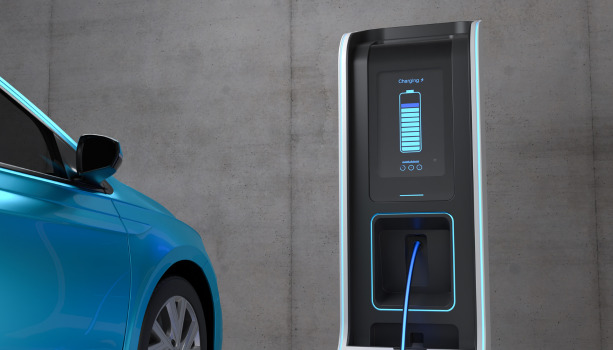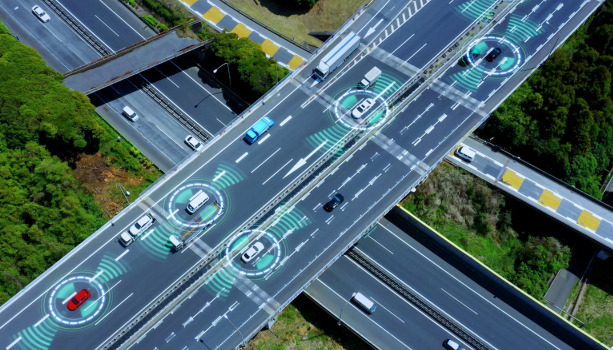While innovations regarding driverless technology have recently skyrocketed, the portrayal of self-driving technology in movies or TV shows is nothing new. As early as the 1960s, directors and producers designed a world where vehicles travel without human assistance. Their imaginations went wild with how they believed this technology would work. Here are a few of our favorite films and TV series, with our take on what they got right (and what may be yet to come).
* This blog may contain spoilers
Love Bug / Herbie Fully Loaded (1968 / 2005) – Herbie, 1963 VW Beetle

A comedy may seem like an odd genre to feature a self-driving car as its main star, but this 1968 self-driving technology-laden movie starred an anthropomorphic white 1963 Volkswagen Beetle named Herbie. Herbie, a mistreated “Bug.” befriends Jim, a down and out race car driver. The unlikely pair make an immediate connection and go on to win competitive races against seasoned professionals. Herbie, while having a mind of his own and speed that is unlikely for a car of his size, still requires Jim’s assistance in order to maneuver himself. Herbie seems to be able to accelerate on his own, which is a feature of Level 2, but more likely Herbie is at a Level 1 for autonomous driving which states that the vehicle is controlled but the driver, but somE assistance features are included in the vehicle (e.g., cruise control).
Knight Rider (1982 – 1986, beyond) – K.I.T.T., 1982 Pontiac Trans Am
The sidekick of Michael Knight, played by David Hasselhoff, K.I.T.T., or Knight Industries Two Thousand, is an artificially intelligent electronic software module in a 1982 Pontiac Firebird Trans Am. Because of its popularity with its viewers, after the original 1982 series, spin-offs and films were created to follow-up on the antics of this smart car. The creators described in much detail how K.I.T.T. operated. Basically an advanced supercomputer, K.I.T.T.’s brain was a microprocessor which had a “self-aware” logic module that allowed K.I.T.T. to think, learn, communicate, and even have his feelings hurt. With a dry, humorous personality that resonated with viewers, K.I.T.T. is most likely unlike any other autonomous vehicle on the market at the moment, but he did have self-driving capabilities including anti-collision detection technology, sensors to detect objects from afar, and other features like seeing in X-ray vision or infrared.

In Season 2, Episode 9, K.I.T.T. is hacked by Randy, a young hacker from Chicago. He types into the command, “Hello. My name is Randy. I want you. Don’t resist. It won’t do you any good.” With a couple more lines of code, Randy manages to hijack control of the Trans Am, although K.I.T.T. remains protected. While it’s quite unlikely that this would be a code a real hacker could use to infiltrate any kind of network or system, it is still a terrifying scenario to envision when it comes to self-driving cars on the road today. The more technologically advanced a vehicle and its system are, the more security it needs in order to function properly in society.
Total Recall (1990) – Johnny Cab
This sci-fi action film stars Arnold Schwarzenegger and Sharon Stone, and tells the story of Quaid, a construction worker who suddenly finds his identity questioned in a world of memory implants. While running from agency attackers, Quaid gets into a seemingly normal taxi to find that he is actually in a “Johnny Cab,” a taxi driven by a robotic driver, dressed in a 1950’s style blue chauffeur outfit. Johnny Cab can converse with the passenger, and can navigate through traffic to get the passenger to the destination.
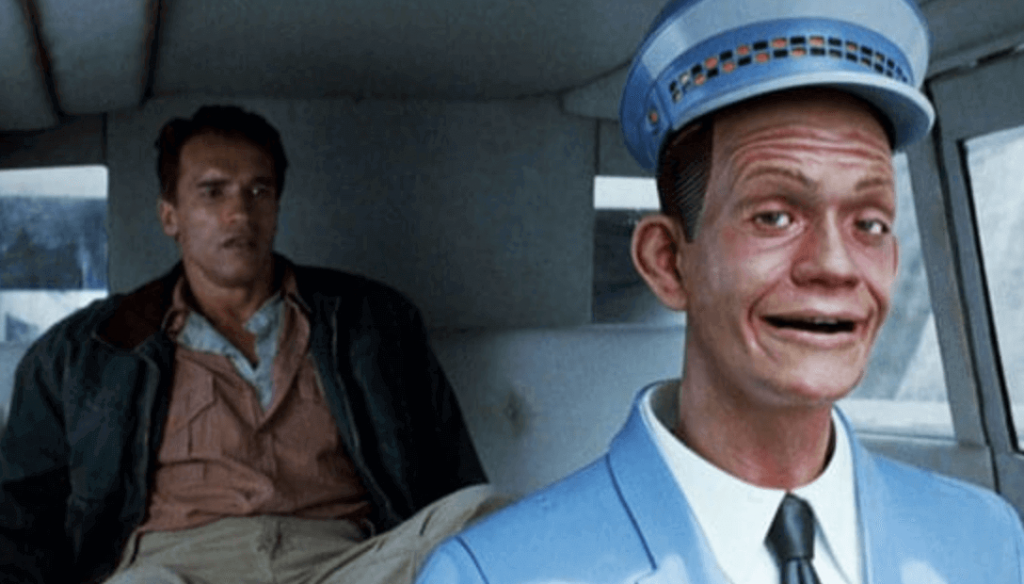
Although the film came out in 1990, real-life “robo-taxis” only started testing in 2016, with MIT spinoff NuTonomy becoming the first company to make autonomous taxis available to the public in a limited area in Singapore. Since then other companies have followed suit, with Uber starting a fleet of 14 modified Ford Fusions, Waymo testing in Phoenix with 600 Chrysler Pacifica Hybrids, and Cruise Automation (a startup acquired by General Motors) launching a beta version of a taxi service in San Francisco with Chevy Bolt EVs.
Minority Report (2002) – Lexus 2054
Although Minority Report was released in 2002, Steven Spielberg wanted the futuristic technology featured in the sci-fi film, set in 2054, to be as realistic as possible. He put together a team of 15 scientists to try to envision what technologies would be widely adopted 50 years in the future, and one of them was the autonomous vehicle. The main character, John Anderton, drives a Lexus 2054 – a fuel-cell autonomous car that Lexus designed specifically for the movie. The cars are able to weave in and out of traffic with 360-degree rotating wheels.
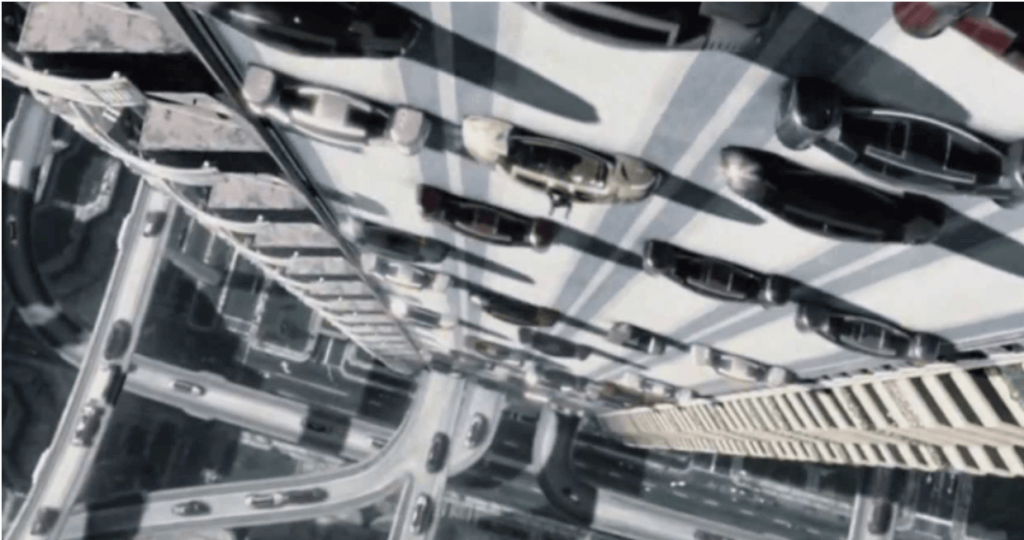
In one particular scene, the police are able to override the vehicle, changing the destination on his navigation system to bring Anderton into the station. So far, police commandeering of an autonomous vehicle is yet to be realized, though in 2019, police in California were able to “trick” a Tesla into pulling over by having two squad cars – one in front, and one behind. A man was arrested for driving under the influence, as Level 3 autonomous vehicles still require an aware and alert driver, despite the self-driving capabilities. This will be an interesting technology to keep tabs on, as it would affect not just the automobile makers, but also security providers and even law enforcement.
I, Robot (2004) – Audi RSQ
Another sci-fi film, I, Robot takes place in the year 2035. Del Spooner, a Chicago detective, hates the robots who serve humanity because he witnessed a robot who used logical data and odds of survival to rescue him from drowning, while letting a young girl die.
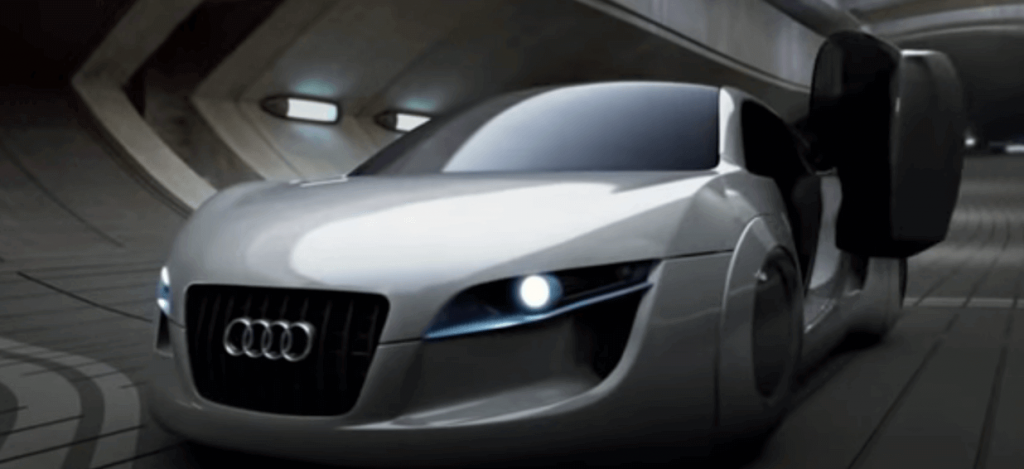
In the film, Spooner rides an Audi RSQ, a concept-car designed by Audi specifically for the movie. The RSQ is able to drive autonomously (even letting Spooner sleep throughout his ride), though it also has manual override capabilities, much to the dismay of Spooner’s fellow passengers who are not accustomed to an actual human being driving a car.
The car’s location is revealed without authorization (signaling an issue with its in-vehicle security), and Spooner is attacked by a fleet of humanoid robots, who have also been hacked by a mainframe gone rogue. One could infer that while the vehicle needs to be secure from intruders, other infrastructure and devices surrounding the vehicle also need to be secure in order to create a secure, functioning autonomous driving ecosystem.
Westworld, Season 3 (2020) – Audi Aicon, driverless ambulance
While the early seasons of this dystopian TV series were against a Western backdrop (with the only transportation methods being horse and carriage), the third season, which began airing in March 2020, takes place in neo-Los Angeles in 2058.
With an urban, future setting, the show introduces the viewers to stand-out technologies like driverless cars, motorcycles, and even driverless ambulances. In Season 3 Episode 3, one of the main protagonists, Dolores, is evacuated in a self-driving ambulance whose paramedics can focus their sole attention onto the patients (level-5 AV). The ambulance can also transport multiple injured people simultaneously, allowing for quick and efficient medical attention.
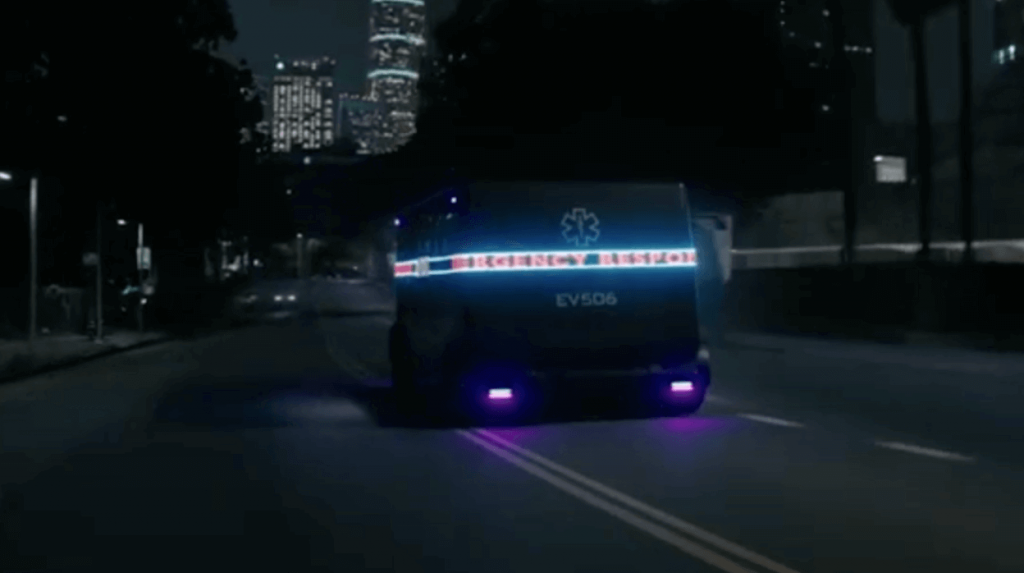
The concept, hopefully, will soon be realized in real-life. A team in Hungary has surveyed patients’ willingness to be transported in a driverless ambulance, though the findings indicated a need for more education on the part of the public in preparing for AV technology. With driverless vehicles, the technology is not limited to private vehicles, but extends to the public sector as well.
What’s next for self-driving technology?
What started out as imaginary and creative output may now be realized in the real world, on real roads. What can we expect in the next couple of decades? Well, besides more self-driving vehicles featured in popular entertainment, experts say that society is well on the way to wider adoption of AV technology, but along with technological fantasy, what films and TV shows also reveal to us is the menacing possibilities of attack or malfunction. This highlights the increasing need for security for both vehicles and infrastructure as well as technological advancement.
Read more about AUTOCRYPT and how we plan to make sci-fi technology both convenient and secure.
